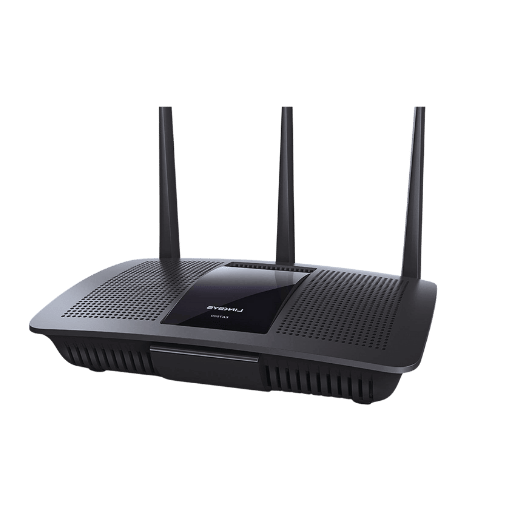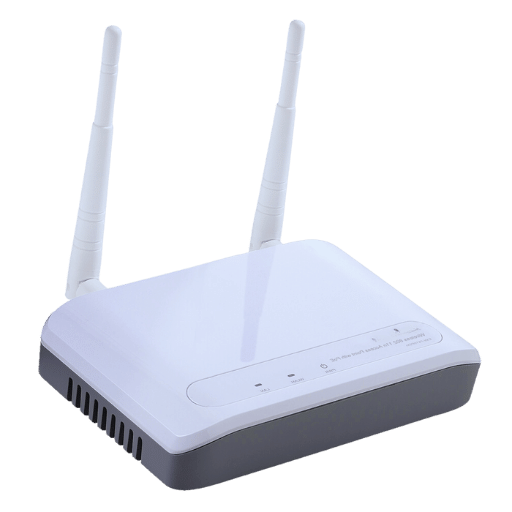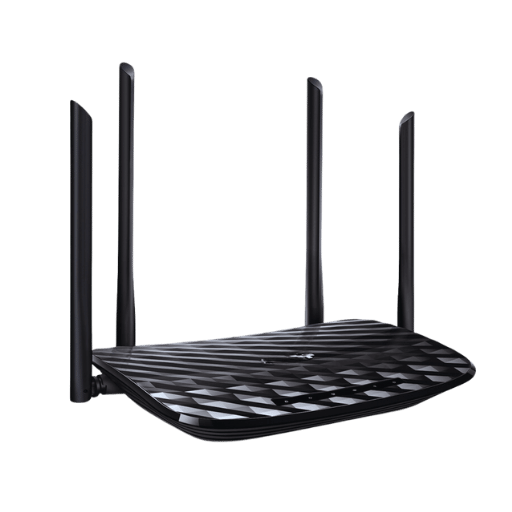In this era of rapid technological advancement, wireless access points are essential components in different network configurations. As the backbone of wireless communications, these devices let clients easily access the internet or other network resources without running wires. This guide has been written to seek more information regarding wireless access points and demonstrate how they work, how they are installed, and the technologies that underpin their evolution. By presenting a comprehensive overview, this article aims to assist IT professionals and fervent network users in improving the effectiveness of their wireless settings to enhance the integrity, efficiency, and security of communications over the global network.

A wireless access point (WAP) is a piece of networking hardware that enables a wireless device to connect to a wired network using Wi-Fi. In effect, it serves as a means of interfacing or connecting wireless and wired Ethernet networks. WAPs receive data from a wired area network, data which is transformed into radio waves and transmitted to wireless devices located within the WAP coverage area. On the other hand, the WAP can receive data transmitted by such devices and send it to its wired area network after routing it. This means that by strategically spacing WAPs to cover confined areas through the broadcast of wireless signals, WAPs increase accessibility and range of the network and facilitate convenient and fast connections within homes and in all commercial situations.
Wireless access is made possible by relying on radio waves to connect devices and networks instead of using physical cables. A key apparatus in this configuration is the Wireless Access Point (WAP), which facilitates communications of various wireless-colored devices with wired networks through Wi-Fi. In other words, the WAP gets information from a cable network, transforms it into radio frequency, and sends out this message for acceptance by such devices as laptops, smartphones, tablets, etc., within the range of the WAP. As networks become more mobile and dynamic, these extensions ensure that communication is maintained for both the home and enterprise contexts.
Actually, the role of access points (AP) in modern network architecture is of great importance as the device acts as a medium of providing and controlling the connectivity in an area, whether home or business, especially when using a wireless access point. Their purpose is to extend the boundary of a wired network over the wireless network by providing network services to wireless endpoints, including point-to-point communications. According to many technology websites, APs help users access networks much faster since they expand the network’s coverage and can manage incoming traffic without causing traffic congestion. Besides that, they enable a wide range of networking and security standards, thus allowing a secure and stronger connection that is essential in today’s digital world. In developing scalable and resilient networks, their capability to handle more and more devices and high data rates is very crucial.
Although a router and a wireless access point (WAP) perform different functions within a network, they both play an integral role in providing adequate strength and connectivity. A router is the primary device in any network as it connects different devices through the transmission of data packets and provides the connection between two or more networks, such as a home network and the internet. It uses routing tables to establish the best path for information transmission and allocates IP addresses. On the other hand, a WAP mostly increases the wireless range so that wireless devices can connect to the wired network but do not perform any routing functions. Typically, routers have wireless capabilities integrated into the device; however, a separate WAP is used in environments where more than one router is required for wireless coverage. While a main router provides network management, including a wireless range and mapping, WAPs provide additional facilities, such as extending the wireless range or greater capacity, which are helpful in more complicated or larger network setups.

Wi-Fi 6, or 802.11ax, brings a set of improvements over its predecessor, the Wi-Fi 5, that enhances the efficiency and effectiveness of the network. Among its features is the Orthogonal Frequency Division Multiple Access (OFDMA), which reduces delay by increasing bandwidth through concurrent channel use by several users. There is also the feature of 1024-QAM (quadrature amplitude modulation) in Wi-Fi 6, which raises data throughput by enhancing the quantity of data each transmission carries. Other notable features include Target Wake Time (TWT), which sends communication timestamps to devices to assist in conserving energy within battery-powered devices.
Wi-Fi 7, or 802.11be, is fast, coming alongside Wi-Fi 6, and is believed to be the wireless standard with faster speed. It is anticipated that Wi-Fi 7 will significantly improve data transfer rates and latencies, supporting wider channels of 320 MHz, as opposed to 160 Mega Hertz of Wi-Fi 6. This widening channel is built to increase the maximum data transfer rate by two times. Further, Wi-Fi 7 will improve MU-MIMO technology, enabling more efficient simultaneous connections to more devices. MLO will also provide an additional performance boost as it allows devices to transmit and receive across multiple bands simultaneously.
The rapid advancements in technology warrant the expected advancements in network quality and reliability, which will help meet the increasing need for intelligent, faster, and more responsive wireless connectivity.
Wi-Fi 6, or 802.11ax, also has many updates meant to help with the performance and efficiency of the network. Given the increasing need for dependable wireless connections in a crowded environment, these improvements are needed. Thanks to Orthogonal Frequency Division Multiple Access, or OFDMA, WiFi 6 achieves better bandwidth distribution, allowing numerous users of different channels simultaneously, aiming at reducing delays. Also, data throughput developments are achieved by embedding five higher data packet transmissions in the supported signal, thanks to the presence of 1024-QAM. Furthermore, I want to mention Target Wake Time as a solution to the power consumption issues, especially for devices with poor power capacities. All these technical improvements combined help form better and more responsive wireless networks with prospects for better connectivity solutions.
Wi-Fi 6E builds upon Wi-Fi 6 (802,11ax) standards with a unique feature: access to the 6 GHz frequency band alongside 2.4 GHz and 5 GHz bands. This makes the transmission of the data more reliable as there are additional fields to reduce congestion and interference that boost network effectiveness in crowded areas. Wi-Fi 6E cements faster and better connections through the 6 GHz wide band, enabling lower latencies and higher data rates, which are crucial for applications such as AR and VR. All these improvements make wireless networks based on Wi-Fi 6E technologies fit the future needs of increasingly connected devices and higher-level and more immersive digital experiences.

Observing the above practices makes it possible to create an effective and efficient wireless network configuration suited to current and future connectivity needs.
Ethernet connections are fundamental in ensuring reliable and high-speed internet access, especially when it comes to situations where the quality and speed factors are critical. While Wi-Fi is a wireless technology, Ethernet is wired, making it more reliable with lower latency and less chance of interference. This is useful, especially for activities that require high data rates, such as online gaming, video chatting, and streaming. Additionally, Ethernet is associated with improved security, as cables cannot easily be tampered with, unlike wireless communication. Ethernet connections maintain a good performance level, making them useful in situations where there is a lot of data transfer, as well as instances where there is a need for stable connectivity.

Ubiquiti Unifi’s Features
Well known for its delivery of great networks with an outstanding focus on tiered distribution, the Ubiquiti Unifi series has become a go-to for many businesses looking for a competent pro access point. Performance hardware coupled with easily deployed management software means network management is easily supported irrespective of whether it is a standalone unit or many access points. The Unifi line offers various functionalities, such as dual-band wi-fi access points, Power over Ethernet (PoE) devices, and advanced security protocols designed to provide robust and secure connectivity in complex operating environments. Also, its integrated controller software includes diagnostic tools that provide comprehensive network monitoring and support, exposing the complexity of large installations.
Functionalities of Unifi U7 Pro Max
Additional integrations are made to the U7 Pro Max model, whereby more durable hardware is included to allow for higher use capacity and usage of more bandwidth. Managed Layer 3, along with its straightforward integrations, is included, which is suited for larger organizations looking to use a professional access point solution in an effective traffic control environment. Multi-gig Ethernet and more AI-powered optimization tools dynamically focused on performance maximization are onboard the U7 Pro Max. Thanks to these features and its flexibly centralized management, the U7 Pro Max can be easily deployed in high-usage corporate environments with speed and reliability for crucial applications.
Netgear has firmly established itself as a global leader in the networking domain, mainly due to its cutting-edge and secure wireless access point (AP) devices. Several regular users can attest to the ease of deploying Netgear’s APs, which provide tri-band Wi-Fi, efficient roaming, advanced network security, and safe connectivity. Besides, Netgear’s APs are considered to have an intuitive interface and to be simple to install, which is why most of them employ cloud services for access control and instant network management. Furthermore, given the flexibility and scale of the solution, products are suitable for various business scales ranging from small to large corporations as users manage to configure their networks as precisely as possible.
The image that first comes to mind when thinking of Cisco is that of an organization whose reliability has made it quite a name in the world of networking systems. A company well known for its expansive and scalable network architecture in the form of a wide array of products such as switches, routers, and wireless systems, all built with high availability and redundancy in mind. Their networking solutions come bundled with cutting-edge software and expansive technologies such as software-defined networking and intent-based networking that help make operations more automated, effective, and safe. Cisco does not stop there; with high regard for cyber security, Cisco embeds security measures as an integral part of the solution to enhance the integrity of the network, as well as the data it carries. Lastly, their support services and vast network of partners enable companies to effectively manage their networks and get solutions to various challenges, making them a true networking powerhouse.

The Long Range and Tri-Radio Wi-Fi 7 solutions have more high-tech equipment to boost network coverage and capacity. Long Range Wi-Fi 7 access is meant to reach a great extent, providing connectivity with very few (if any) areas devoid of connectivity and allowing those at the edge of the network to receive good support no matter whether the position being accessed is interior or exterior of a structure. Tri-radio technology allows multiple frequency bands to be used simultaneously, allowing for convenient links to be made across different ranges, empowering effective device usability, making optimal use of the bandwidth, and raising the throughput. This makes sense in larger enterprise environments where users require high-density wireless access as it provides better data speeds, lower latency, and a better-managed network. The use of these modern technologies will, in turn, make it possible to construct a more stable and flexible network infrastructure, which satisfies the requirements of a modern economy of a wide range of companies.
Power over Ethernet (PoE) provides several benefits in large-scale deployments of wireless networks by reducing the network infrastructure’s complexity and the associated installation costs. The PoE technology allows for the transmission of both data and electrical power through a single cable that can power wireless access points, IP cameras, and VoIP phones. Hence, it removes the dependency on independent electrical infrastructure, making device locations more mobile and enhancing overall cabling requirements. Furthermore, PoE also promotes network expansion and redundancy through easier power supply control, ensuring the operation of key components in case of power loss through backup mechanisms. The simplified installation process, cost benefits, and operational flexibility also emphasize why PoE is beneficial in large deployments of wireless networks.
Combining Bluetooth and Wi-Fi capabilities allows devices to use the advantages of both technologies and provides seamless coverage on a wide range of applications. Bluetooth is effective for short-distant links while requiring minimal energy which fits well for the high capacity and longer range connectivity provided by Wi-Fi. Users can increase their connectivity by pairing devices via Bluetooth for quick, low-volume tasks and then switch to Wi-Fi for activities that require a lot of data. This combination, commonly done by intelligent resource management, follows the same principles as software applications for seamless connection in environments with high expectations for wireless interconnection.

A: In the war of wireless access point vs router– A wireless access point, also known as a WAP, connects wireless-enabled devices to a wired network. However, there are some fundamental differences between a WAP and a Router: A WAP only provides Wireless connections, whereas a router facilitates connections between different networks’ traffic and contains integrated WAP functionalities. Commonly, WAPs are installed to extend the coverage library concepts area or to give Wi-Fi capabilities to a cabled network.
A: A Wi-Fi extender permits the elimination of Wi-Fi dead zones, which in turn increases the Wi-Fi coverage area.; A wireless range extender (also referred to as a repeater) increases the effective range of a Wi-Fi network by re-sending the existing signal from your router or access point to areas with weak signals or no signal at all. This may be more advantageous in scenarios involving larger structures, such as homes or offices, where a single wireless access point may not be adequate for coverage.
A: Les points d’accès Wi-Fi 6 (802.11ax) et Wi-Fi 7 (802.11be) marquent un autre palier au regard des générations précédentes. Le Wi-Fi 6 apporte des améliorations au niveau de la vitesse, la capacité d’accès pour plus d’appareils, des performances dans les zones surpeuplés, et efficacité énergétique. Le wi fi 7 dont le développement est en cours, annonce des vitesses allant jusqu’à 30 gb/s, faible latence et une meilleure utilisation du spectre. Ces points d’accès avancés sont donc plus adapté pour the high volume of wireless and IoT devices used today in a network.
A: Ruckus est une maison reconnue dans la fabrication d’equipements d’accès sans fil et inmatrices. Les appareils de la gamme Ruckus AP sont approriétés dans les environnements d’entreprise et haute densité, du fait de leur technologie d’antennes avancées, plongeant le simples d’avantages de couverture et de puissance du signal. Des combinaisons adaptées d’éléments de carrière, подавителей помех и обеспечивающих бесшовный роуминг, также делают их слишком мощным wi-fi решением для трудных высокочастотных зон.
A: 2.4GHz and 5GHz frequency bands are very common in today’s wireless access points. However, the 2.4GHz frequency band is more consistent over a larger area, though speeds are slower with an increased risk of interference, while the 5GHz frequency band is faster but provides a lower range. Many current APs have dual-band with the option to connect the device to the appropriate frequency and only use one depending on the device’s requirements and the network’s conditions.
A: Point-to-point wireless access points are used when a wireless connection has to be set up between two designated points to link different networks or provide long-range coverage. This configuration is often employed when connecting different buildings spread over a campus, providing internet access to sparsely populated regions, or forming a wireless link between two wired networks. Point-to-point systems often use directional antennas that help achieve longer ranges and faster transmission speeds.
A: A few ways will guide one through configuring a wireless access point: 1) Ethernet cable connection of the AP to a computer or router. 2) Using a specific IP or certain provided administrative tools to establish contact with the AP. 3) Choosing SSID and inserting a password. 4) Activating the security (e.g. WPA3). 5) Change the default channel or power transmission if necessary. 6) Change settings of other available options, such as guest or VLAN networks. Each type and brand of signal distribution device will, of course, have its own steps for performing this process.
A: The IEEE 802.11 standard is a combination of specifications that deals with implementing WLAN (wireless local area network); it is a computer referring to communication. Such standardization enables geographically separated networks to interconnect and allows strange devices to communicate. This standard is fundamental to wireless access points because it provides interoperability across devices from different manufacturers. So, over the years, various versions of the standard, presently the 802.11n, then the 802.11ac, and the last in the series, the 802.11ax, have been released, improving the speed, range, and efficiency.